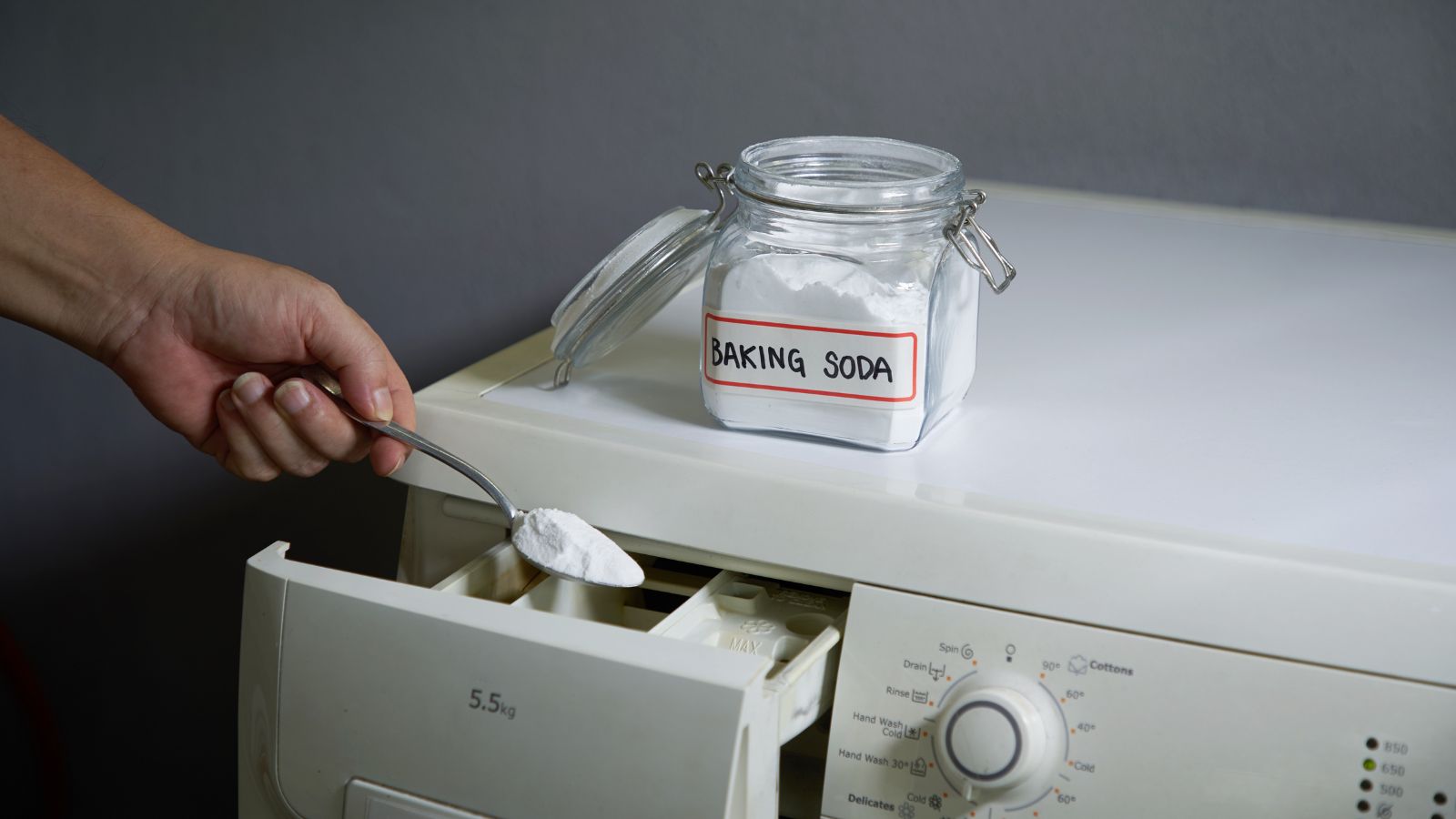
Is Baking Soda Toxic to Dogs? A Guide for Pet Parents
Photo Credit: Canva Pro
Is baking soda toxic to dogs? If dogs eat too much of it, yes. Most of the time, small amounts are safe, but large amounts can be very bad for their health. A lot of pet owners clean or groom their pets with baking soda, but not all of these uses are safe. Here, we'll what to do if your dog eats baking soda, what is safe and what is not. Read on to learn how to keep your dog safe from harm.
Will Baking Soda Hurt My Dog if He Licks It?
Photo Credit: Canva Pro
Is Baking Soda Toxic to Dogs?
Large amounts of baking soda are harmful to dogs. Sodium bicarbonate, the active ingredient, is a chemical compound that might not seem harmless but can create serious health problems if not used appropriately. Baking soda is a popular ingredient in cooking, cleaning, and deodorizing carpets, but dogs shouldn't eat it.
-
Toxic when ingested in large quantities: Toxic oral dose of sodium bicarbonate ranges between 4–6 g/kg in dogs.
-
Main component: Sodium bicarbonate can disrupt electrolyte balance.
-
Typical exposure scenarios: Dog eats powder off the floor, licks carpet or fur.
-
Accidental ingestion risk: Low in small quantities.
-
Baking soda toxicity symptoms: Arise with high doses and can lead to vomiting, seizures, or even death.
When Should You Be Concerned If Your Dog Licks Baking Soda?
It usually won't hurt the dog to lick a light dusting of baking soda, like what you use to clean the dog's coat or put on carpets. But concern arises when the ingestion becomes repetitive or the quantity involved increases, especially for small dogs.
Depending on how sensitive they are, a 10-pound (~4.5 kg) dog may show signs after eating about 2–3 tablespoons, but not always from just one.
-
Monitor signs of toxicity: Vomiting, diarrhea, disorientation.
-
Neurological signs: Lethargy, tremors, seizures.
-
Critical threshold: Symptoms may arise with ingestion exceeding 1 tsp per 2.5–5 lbs of body weight, but this is only a general approximation and not a scientifically validated threshold.
-
Vet intervention: Necessary if signs appear or the dog eats more than a trace.
-
In severe cases: IV fluids and electrolyte stabilization may be needed.
How Much Baking Soda Is Toxic for Dogs?
Photo Credit: Canva Pro
Toxic Dose by Size and Weight
Knowing how much baking soda is toxic to dogs helps prevent dangerous outcomes. An average range for harmful levels is 10 to 20 grams per kilogram of body weight. For example, if a small dog eats a small box of baking soda (about 227 grams), it can kill it easily.
-
Toxic dose range: 2–4 teaspoons or 10–20g per kg of body weight.
-
Ten pound dog risk: As low as 3–4 tablespoons.
-
Larger dogs: Require multiple small boxes to experience toxicity.
-
Riskier scenarios: Dogs eat baking soda from the trash, spilled powder, or DIY cleaning mixtures.
-
Smaller breeds: At significantly higher risk of soda toxicity.
Signs and Timeline of Baking Soda Toxicity
If a dog eat too much baking soda, they will start to feel sick within hours. As soon as they take baking soda, their electrolytes can become seriously imbalanced. Usually, vomiting is the first sign. Next come neurological symptoms.
-
First sign: Vomiting, typically within 3 hours.
-
Common symptoms: Tremors, lethargy, seizures, disorientation.
-
Respiratory issues: Shortness of breath, collapse.
-
Medical risks: Electrolyte imbalance, metabolic alkalosis, and potential neuromuscular dysfunction.
-
If untreated: May lead to even death in severe cases.
Is Baking Soda on Carpet Safe for Dogs?
Photo Credit: Canva Pro
Safe Carpet Use with Pet Precautions
Pet owners often use baking soda to get rid of smells in their rugs. Baking soda can be used to clean pet bedding, floor mats, and rugs because it neutralizes acids and soaks up smells. When used correctly and cleaned thoroughly afterward, baking soda safe use on carpets is achievable in homes with dogs.
-
Use for cleaning: Neutralize odors and refresh pet areas.
-
Application tip: Sprinkle baking soda lightly, let it sit briefly.
-
Post-use care: Vacuum thoroughly to prevent dog exposure.
-
Pet safety: Keep dogs out while baking soda sits.
-
Recommended areas: Only apply to surfaces when dogs are not present and ensure complete vacuuming afterward to avoid ingestion risk.
Possible Hazards of Overexposure
If you don't clean up baking soda properly, dogs may lick it off of surfaces or breathe it in while they sniff around. This can be very dangerous if too much stays on the ground or if it's used too often.
-
Overexposure risk: Improper cleaning leaves residue.
-
Inhalation danger: Can cause coughing or sneezing.
-
Licking hazard: May lead to digestive upset.
-
Preventive steps: Short exposure, spot testing, minimal use.
-
Alternative mix: Mix equal amounts baking soda and white vinegar for cleaning.
Is It Safe to Rub Baking Soda on Dogs?
Photo Credit: Canva Pro
Dry Bathing & Skin Soothing Benefits
When used correctly and in small amounts, baking soda can be used as a dry shampoo on dogs without harm. It helps get rid of smells, calms down sensitive skin, and takes away extra oil from your dog's coat Most dogs tolerate it well when applied away from the face.
-
Safe grooming option: Use baking soda as a dry shampoo.
-
Skin benefits: Helps soothe irritated or itchy dog's skin.
-
Odor control: Absorbs oil and neutralizes acidic substances in the fur.
-
Application tip: Sprinkle baking soda, brush through after 5–10 minutes.
-
Best for: Pet owners dealing with dirty or smelly furry friends.
When to Avoid or Rinse Thoroughly
If your dog likes to lick a lot, baking soda shouldn't be used on open wounds or areas that are red and swollen. After applying, brushing or rinsing is essential to prevent accidental ingestion. It can irritate the skin or make you more likely to become poisoned if you leave it on for too long.
-
Do not use: On broken skin or dogs that lick their coat.
-
Post-use care: Always brush or rinse baking soda off.
-
Sensitive skin caution: Mix equal amounts of cornstarch and soda for gentler results.
-
Ingestion prevention: Supervise your dog during and after use.
-
Not suitable for: Dogs with chronic skin conditions without vet guidance.
Why We Care About Pets and Owner’s Safety at FullyHealthy
Our Commitment to Safe, Natural Products
FullyHealthy wants to help pet owners by providing allergen-free food items. Some of the names in our marketplace you can trust, like Bob's Red Mill, which is known for making good baking soda. We care about keeping fur parents by being open about the ingredients we use and having strict standards for our products.
-
Mission: Support clean, allergen-free, and pet-safe living.
-
Trusted partners: Bob’s Red Mill baking soda included in our store.
-
Commitment to safety: Products reviewed for household and pet use.
-
Pet family focus: Designed with furry friends and humans in mind.
-
One-stop solution: From cooking staples to pet-friendly cleaning products.
Why Ingredient Transparency Matters
Every ingredient is important in homes with pets, because something that is safe for people might not be safe for dogs. Handling natural products like baking soda with care is still important to keep them safe. That's why FullyHealthy's goal is to help pet owners make smart decisions about cooking and cleaning.
-
Safety through awareness: Highlight risks of common items like baking soda.
-
Transparency value: Labels designed to simplify decision-making for pet owners.
-
Empowered choices: Prevent soda toxicity with informed product use.
-
Holistic home care: Safe options for carpets, pet bedding, and more.
-
Educational role: Help pet parents understand the link between food, cleaning, and dog safety.
Final Thoughts
So is baking soda safe for dogs? As long as it's not used improperly, baking soda can be useful. Small amounts of baking soda are safe for dogs, but it can be harmful if they eat too much or put it on an area that hurts, like a wound. Mix with warm water only, never dry acid, and never induce vomiting unless told by a vet.
Loose hair or salty taste is not clinically relevant in the context of baking soda use. The main focus should still be on the risk of ingestion and safe application. Keep your furry friend safe and read labels twice, not once.
FAQs
Can baking powder dogs safely consume it?
No, baking powder is more dangerous than baking soda and can cause severe symptoms due to added acidic salts (e.g., tartaric acid).
What happens if dogs eat baking soda?
If dogs eat baking soda in more than small amounts, it causes issues due to its somewhat salty taste and leads to baking soda bad reactions.
Can I use baking soda paste on my dog?
Yes, a paste made with warm water is okay in small amounts if not on an affected area or near loose hair.
Should I induce vomiting if dogs eat baking soda?
Do not induce vomiting unless a vet confirms it, as baking powder or soda can worsen the affected area.
Does baking soda help with fat content or loose hair?
Baking soda does not affect fat metabolism. It may absorb surface oils for odor control, but it does not help reduce fat or effectively manage loose hair.

Leave a comment